Our career change survey reveals the impact COVID-19 is having on career change decisions. We have analysed the trends from the survey and can share some insights into respondents’ motivators for making a career change, the importance of training in switching careers and people’s willingness to invest in this training.
We hope these survey findings can help training providers address learners’ goals and concerns about switching careers.
Our survey is still open and the analysis is based on answers collected from 368 respondents between June 15th, 2020 and August 17th, 2020. We plan to continue to track trends in our learners' perspectives on career change.
Headline Statistics: COVID-19 has substantial impact in prompting career change
-
More than a third of respondents (35%) say that COVID-19 has prompted them to decide to make a career change.
-
Even those who are very happy or somewhat happy in their current roles are considering switching careers (89%).
-
The top drivers of career change are not related to COVID-19. The most important motivator is “Choice - I want to try something new” (57%) followed by “Wellbeing - I need more work/life balance” (38%) and “Salary - I am looking to earn more money” (34%).
-
Most respondents recognise that they need to learn something new in order to change careers (83%). However, more than a third (35%) of respondents are not sure how much training they will need. This presents a marketing opportunity for training providers who can highlight how their courses can help people change careers.
-
Twenty-seven percent of respondents say that they are not willing to invest any money to learn the skills they need to switch careers. On the other end of the scale, many respondents are willing to invest £500-£1000 (18%) and £1000+ (25%). These findings indicate that training providers can tailor their marketing strategy to different segments of learners.
COVID-19 impacts career change decisions across age groups and job levels
A substantial proportion of respondents (35%) say that COVID-19 has prompted them to decide to make a career change.
There are some variations in COVID-19’s impact depending on age. Respondents aged 25-34 (41%) and 55+ (43%) are more likely to decide to change careers due to COVID-19 than the other age groups (average 31%).
There is little variation in the impact of COVID-19 by job level. Around 31% to 33% of respondents for most job levels are prompted by COVID-19 to make a career change, with supervisor/ team leader respondents reporting a slightly higher effect from COVID-19 at 39%.
The outlier is the owner/ executive/ C-level - this outlier result could be due to the small sample size of respondents at this job level.
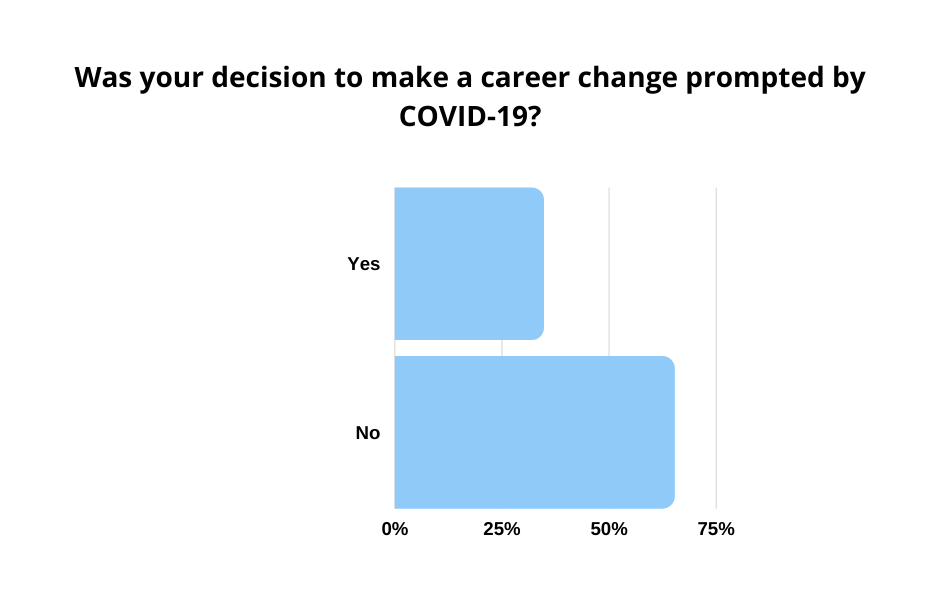

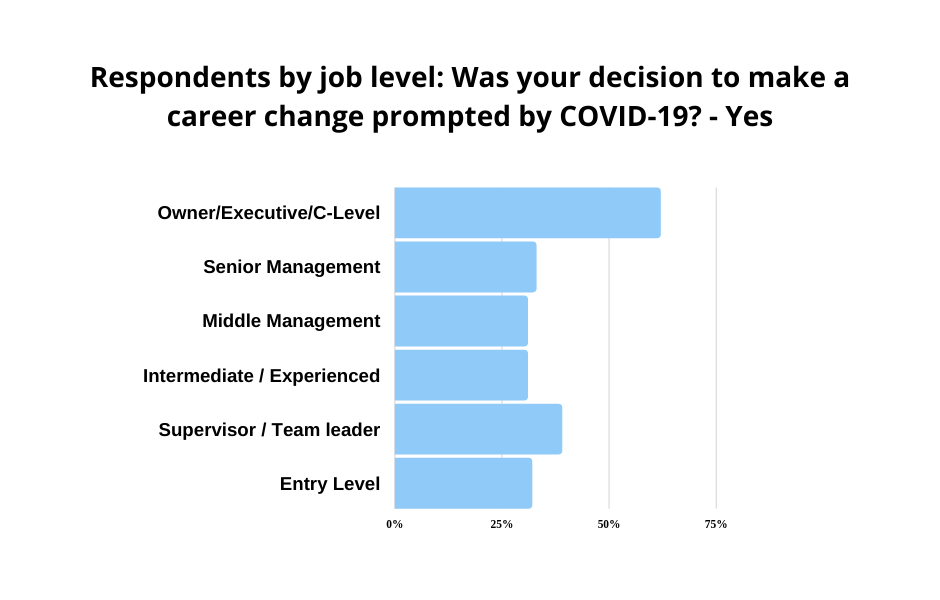
Even happy employees are considering making a career change
The vast majority of respondents (96%) are currently considering making a career change. This is unsurprising because the people who decide to participate in a career change survey are likely to be predisposed to thinking about switching careers.
However, what is surprising is that even those who are very happy or somewhat happy in their current roles are considering making a career change (89%). This could perhaps be explained by the fact that the top motivator for making a career change is to try something new, as discussed below.
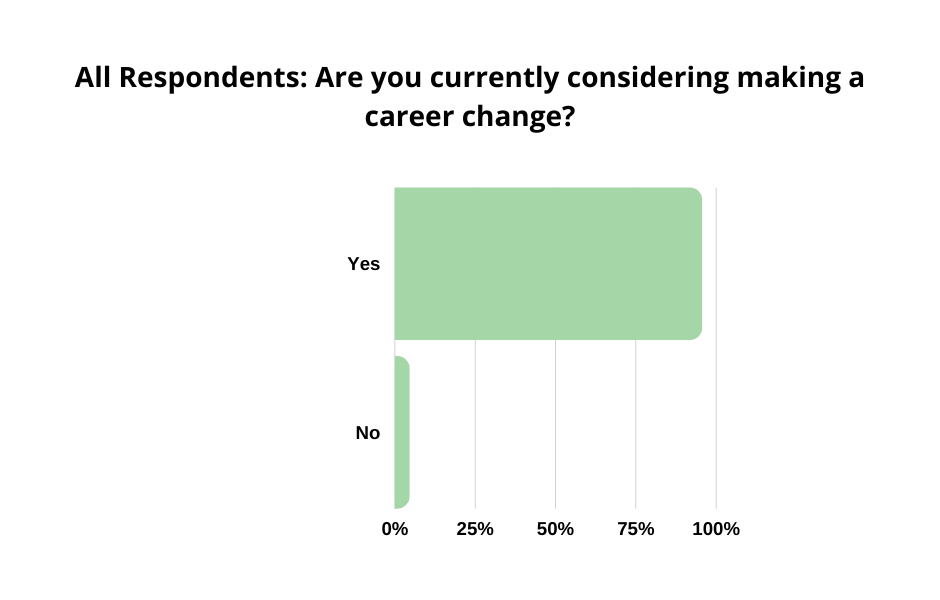
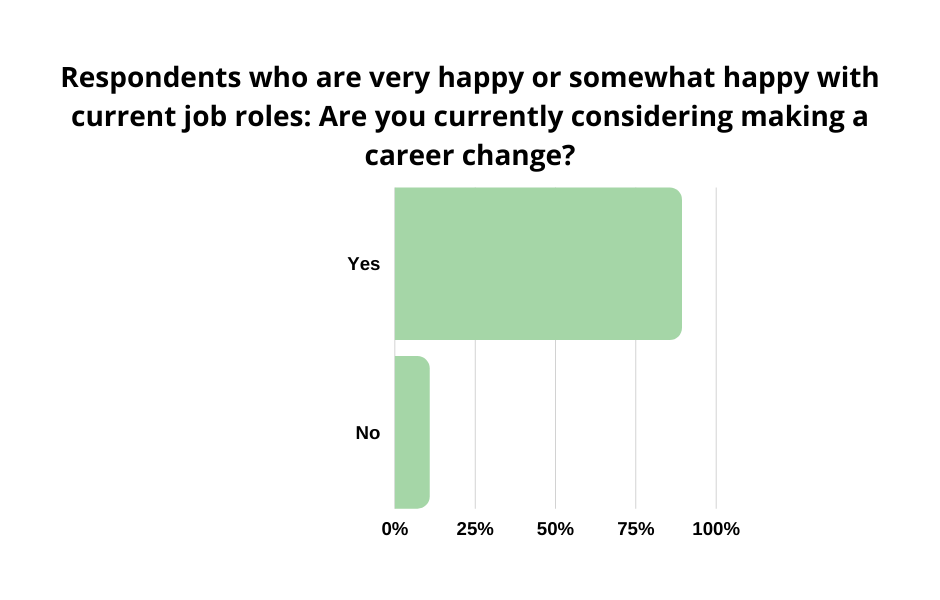
Top motivators to switch careers are not related to COVID-19
Choice is by far the most important driver of career change. Fifty-seven percent of respondents say that they want to try something new.
The next two reasons are “Wellbeing - I need more work/life balance” (38%) and “Salary - I am looking to earn more money” (34%).
COVID-19 also appears as a reason with 16% saying that their industry / career path is not as secure post COVID-19 as it was pre COVID-19.

“ I need a more fulfilling role where I know I'll be making a real difference to people and enhance their lives.”
- Respondent quote
“It's time to go for what I actually want to do.”
- Respondent quote
“The job offer did not clear as COVID-19 took over and the company revoked on hiring.”
- Respondent quote
Importance of learning presents marketing opportunities for training providers
Most of the respondents recognise that they need to learn something new in order to switch careers (83%).
However, more than a third (35%) of respondents are not sure how much training they will need.
This suggests that many respondents are still at an early stage of their buyer’s journey, where they have become aware of their learning needs and are still researching their options.
This presents a marketing opportunity for training and education providers. Providers can highlight how their course offerings can help people change careers. They can detail the necessary course information such as time and monetary investments.
Training providers should emphasise how learners can use their newly acquired skills in their desired career. Providers can perhaps even offer career guidance for learners who are switching careers. It would be beneficial to learners if training providers can provide case studies of people who have successfully changed careers because of their courses.
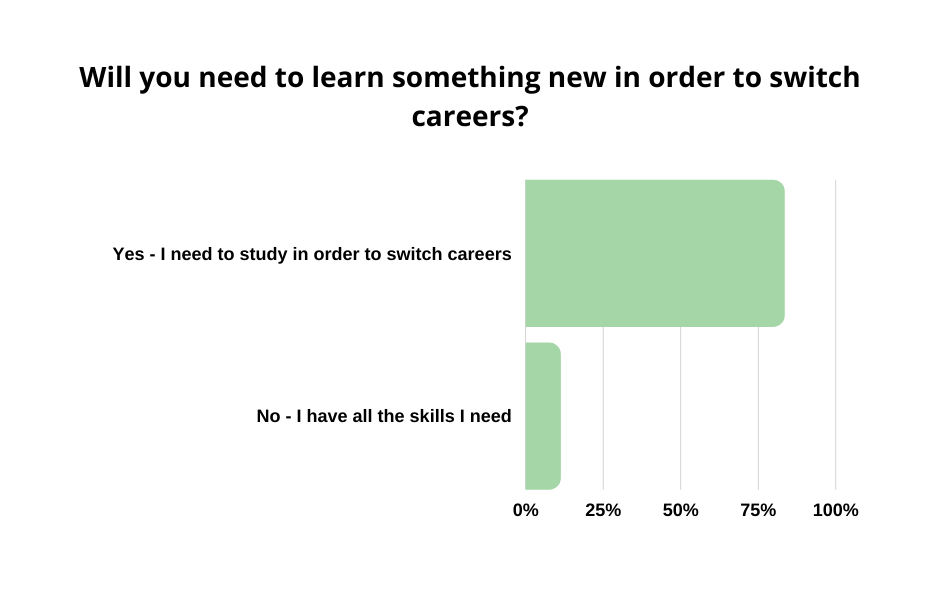
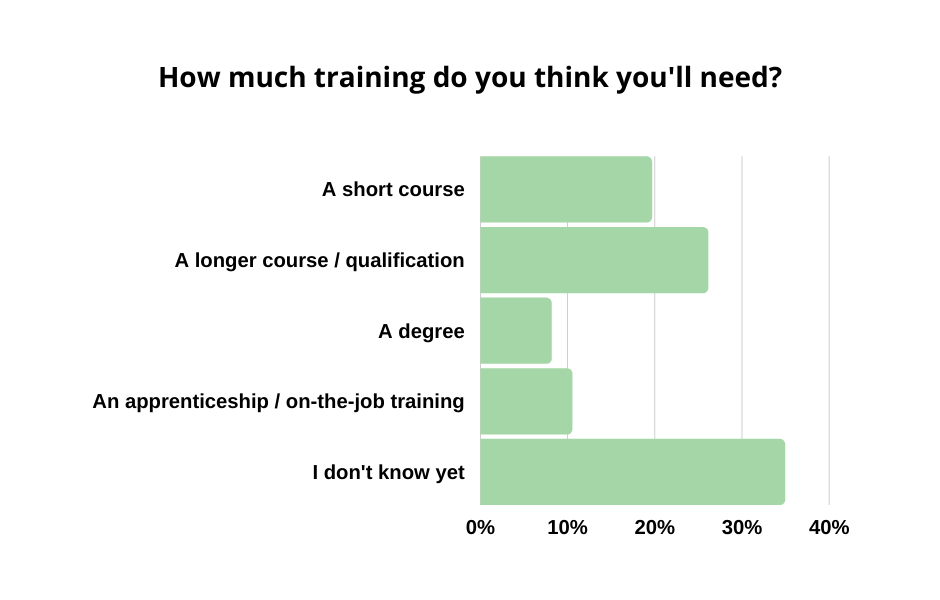
Training providers should adopt a segmented marketing strategy to address learners’ varying price sensitivities
A substantial segment of respondents are very cost sensitive. Twenty-seven percent of respondents say that they are not willing to invest any money to learn the skills they need to switch careers. They need a free or government-funded course.
On the opposite end of the scale, there are many respondents who are willing to invest £500-£1000 (18%) and £1000+ (25%) to get the skills they need to change careers.
Unsurprisingly, the proportion of respondents who are willing to invest £500 and above tends to increase with their job level. This is likely due to the respondents having a higher income at a higher job level. For instance, 35% of entry level respondents are willing to invest £500+ in training compared to 62% of owner/ executive/C-level respondents.
The group that bucks the trend is middle management respondents - 59% are willing to spend £500+ in the training. This proportion is higher than for senior management respondents (44%).
These findings indicate that training providers can tailor their marketing strategy to different segments of learners. For example, they can consider offering free short courses that act as funnels to longer paid courses. Additionally, they can see if they can register to act as training providers for government-funded courses.
The findings also reveal that learners are willing to invest considerable sums of money in the courses that they believe will help them gain the skills they need to switch careers. Training providers should then ensure that their marketing strategy is targeted at supporting learners’ career change goals.
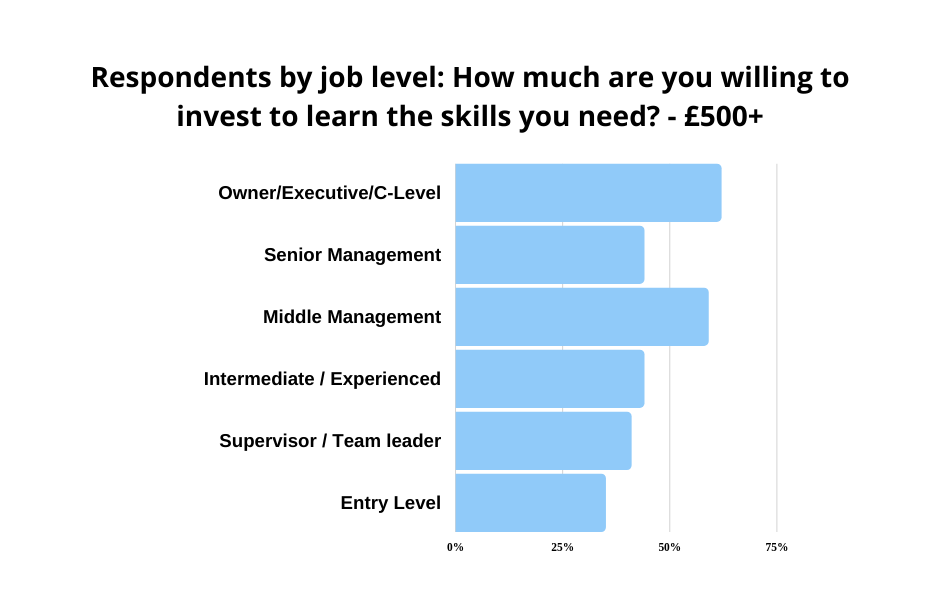
Do you want to get more insights into learners and attract the right training buyers for your courses? Visit us and find out how we can help!



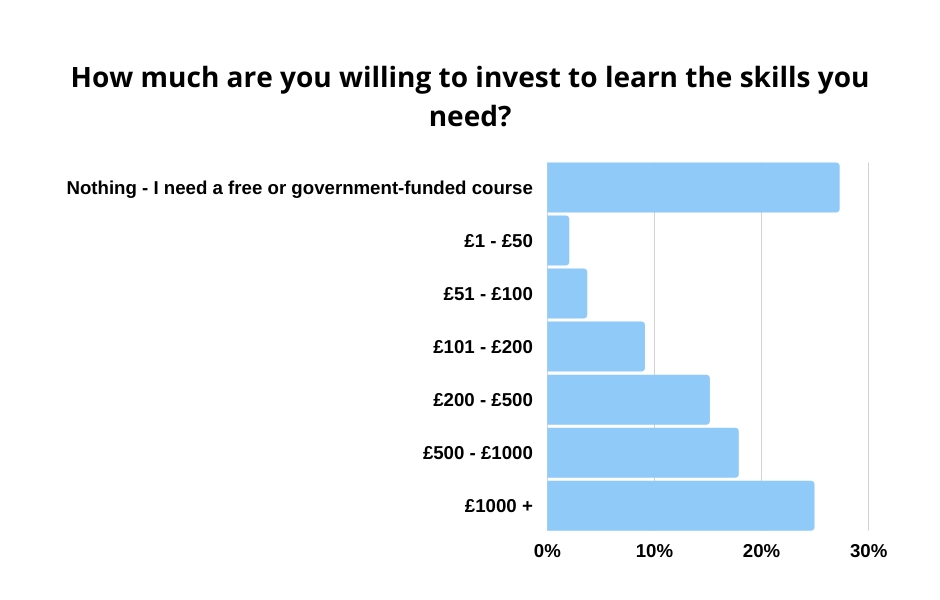


.jpg)
-Oct-29-2025-11-53-41-3462-AM.jpg)

